 Open Access
Open Access
ARTICLE
Convolutional Deep Belief Network Based Short Text Classification on Arabic Corpus
1 Department of Computer and Self Development, Preparatory Year Deanship, Prince Sattam bin Abdulaziz University, AlKharj, Saudi Arabia
2 Department of Language Preparation, Arabic Language Teaching Institute, Princess Nourah Bint Abdulrahman University, P.O. Box 84428, Riyadh, 11671, Saudi Arabia
3 Department of Industrial Engineering, College of Engineering at Alqunfudah, Umm Al-Qura University, Saudi Arabia
4 Department of Information Systems, College of Computer and Information Sciences, Princess Nourah Bint Abdulrahman University, P.O. Box 84428, Riyadh, 11671, Saudi Arabia
5 Department of Digital Media, Faculty of Computers and Information Technology, Future University in Egypt, New Cairo, 11835, Egypt
* Corresponding Author: Abdelwahed Motwakel. Email:
Computer Systems Science and Engineering 2023, 45(3), 3097-3113. https://doi.org/10.32604/csse.2023.033945
Received 02 July 2022; Accepted 18 August 2022; Issue published 21 December 2022
Abstract
With a population of 440 million, Arabic language users form the rapidly growing language group on the web in terms of the number of Internet users. 11 million monthly Twitter users were active and posted nearly 27.4 million tweets every day. In order to develop a classification system for the Arabic language there comes a need of understanding the syntactic framework of the words thereby manipulating and representing the words for making their classification effective. In this view, this article introduces a Dolphin Swarm Optimization with Convolutional Deep Belief Network for Short Text Classification (DSOCDBN-STC) model on Arabic Corpus. The presented DSOCDBN-STC model majorly aims to classify Arabic short text in social media. The presented DSOCDBN-STC model encompasses preprocessing and word2vec word embedding at the preliminary stage. Besides, the DSOCDBN-STC model involves CDBN based classification model for Arabic short text. At last, the DSO technique can be exploited for optimal modification of the hyperparameters related to the CDBN method. To establish the enhanced performance of the DSOCDBN-STC model, a wide range of simulations have been performed. The simulation results confirmed the supremacy of the DSOCDBN-STC model over existing models with improved accuracy of 99.26%.Keywords
Arabic was the mother tongue of almost 300 billion persons roughly twenty-two nations; and the target language of this study, it is the 5th largest national language in the list of top 100 natural languages spoken all over the world [1]. The writing orientation of Arabic language will be from right to left. Any Arabic word was a grouping of twenty-eight letters which belonging to Arabic alphabetic sets. The twenty-eight letters were extensible to 90 letters because of additional marks, vowels, and writing shapes. The Arabic language contains 2 main formats one is Dialectal (colloquial) Arabic and another one is Standard Arabic [2,3]. In Standard Modern Standard Arabic (MSA) and Arabic Classical Arabic (CA) will be presented and CA becomes the historical linguistic utilized in the Hadith and Quran [4]. MSA was the formal format and utilized in newspapers, books, TV, formal speeches, and education. But Arabic speakers employed the dialectal format in everyday communication and whenever it expresses their views regarding distinct aspects of life on mass media [5,6]. There exist several Arabic dialects, but 6 are considered as main such as Moroccan, Egyptian, Iraqi, Levantine, Yemini, and Gulf [7]. The dialects were one such cause for introducing several new words to any language specifically stop words [8]. Even though Arabic becomes a broadly utilized language, OM studies have only held recently, and this domain needs more research because of the exceptional nature of Arabic linguistic morphology values [9]. Arabic opinion mining has trouble because of the poorness of language sources and Arabic-specific language characteristics [10].
Arabic language users frame the rapidly growing linguistic group over the web in terms of number of Internet users [11]. 11 billion people were active on Twitter posted nearly 27.4 million tweets every day. In accordance with the survey, most of the youngest Arabs receive news from Twitter and Facebook, not television [12,13]. Like others, the region was rife with rumours and fake news. Advancing a classifier mechanism for Arabic linguistic needs understanding of syntactic framework of words so it could represent and manipulate the words for making their categorization very accurate [14]. The research into Arabic text classifiers can be confined when compared with the research volume on English textual classifiers. There exists less research volume on Arabic short textual classifications [15]. Nevertheless, the language features, the inaccessibility of free accessibility to Arabic short text corpus were other reasons [16].
Hawalah [17] devise an improved Arabic topic-discovery architecture (EATA) that uses ontology for offering an effectual Arabic topic classifier system. And presented a semantic enhancing method for enhancing Arabic text classifier and topic discovery method by using rich semantic data in Arabic ontology. Then relies in the paper on vector space method term frequency-inverse document frequency (TF-IDF) and the cosine similarity technique for classifying new Arabic text files. Ibrahim et al. [18] assess Arabic short text classifier utilizing 3 standard NB classifiers. In this technique, the classifications are made with the dissertations and thesis utilizing their titles for performing the classifier procedure. The collected data set was gathered from distinct sources by utilizing standard scrapping algorithms. This algorithm categorizes the document on the basis of their titles and is positioned in the wanted specialization. Numerous pre-processing methods were implied, like (space vectorization, punctuation removal, and stop words removal).
Beseiso et al. [19] modelled a new structure for hand Arabic words classifier and comprehends depending on recurrent neural network (RNN) and convolutional neural network (CNN). In addition, CNN method was very influential for scrutiny of social network analysis and Arabic tweets. The predominant method employed in this article was character level CNN and an RNN stacked on top of each other as the classifier structure. Najadat et al. [20] project a keyword-related algorithm to detect Arabic spam reviews. Features or Keywords were words subsets from original text which were labelled as significant. A weight of term, TF-IDF matrix, and filter approaches (like correlation, information gain, uncertainty, deviation, and chi-squared) were employed for extracting keywords from Arabic text. Albalawi et al. [21] offer a complete assessment of data preprocessing and word embedded algorithms with regard to Arabic document classifiers in the field of health-based transmission on mass media. And assess twenty-six text preprocessing implied to Arabic tweets in the training processes a classifier for identifying health-based tweets. For this one uses Logistic Regression, traditional machine learning (ML) classifiers, etc. Additionally, reported experimental outcomes with the deep learning (DL) structures bidirectional long short term memory (BLSTM) and CNN for similar textual classifier issues.
This article introduces a Dolphin Swarm Optimization with Convolutional Deep Belief Network for Short Text Classification (DSOCDBN-STC) model on Arabic Corpus. The presented DSOCDBN-STC model majorly aims to classify Arabic short text in social media. The presented DSOCDBN-STC model encompasses preprocessing and word2vec word embedding at the preliminary stage. Besides, the DSOCDBN-STC model involves CDBN based classification model for Arabic short text. At last, the DSO approach can be exploited for optimal modification of the hyperparameters related to the CDBN technique. To accomplish the enhanced performance of the DSOCDBN-STC model, a wide range of simulations have been performed. The simulation results confirmed the supremacy of the DSOCDBN-STC model over existing models.
2 The Proposed DSOCDBN-STC Model
In this article, a novel DSOCDBN-STC model was projected for short text classification on Arabic Corpus. The presented DSOCDBN-STC model majorly aims to classify Arabic short text in social media. The presented DSOCDBN-STC model encompasses pre-processing and word2vec word embedding at the preliminary stage. Besides, the DSOCDBN-STC model involves CDBN based classification model for Arabic short text. Fig. 1 demonstrates the overall process of DSOCDBN-STC method.
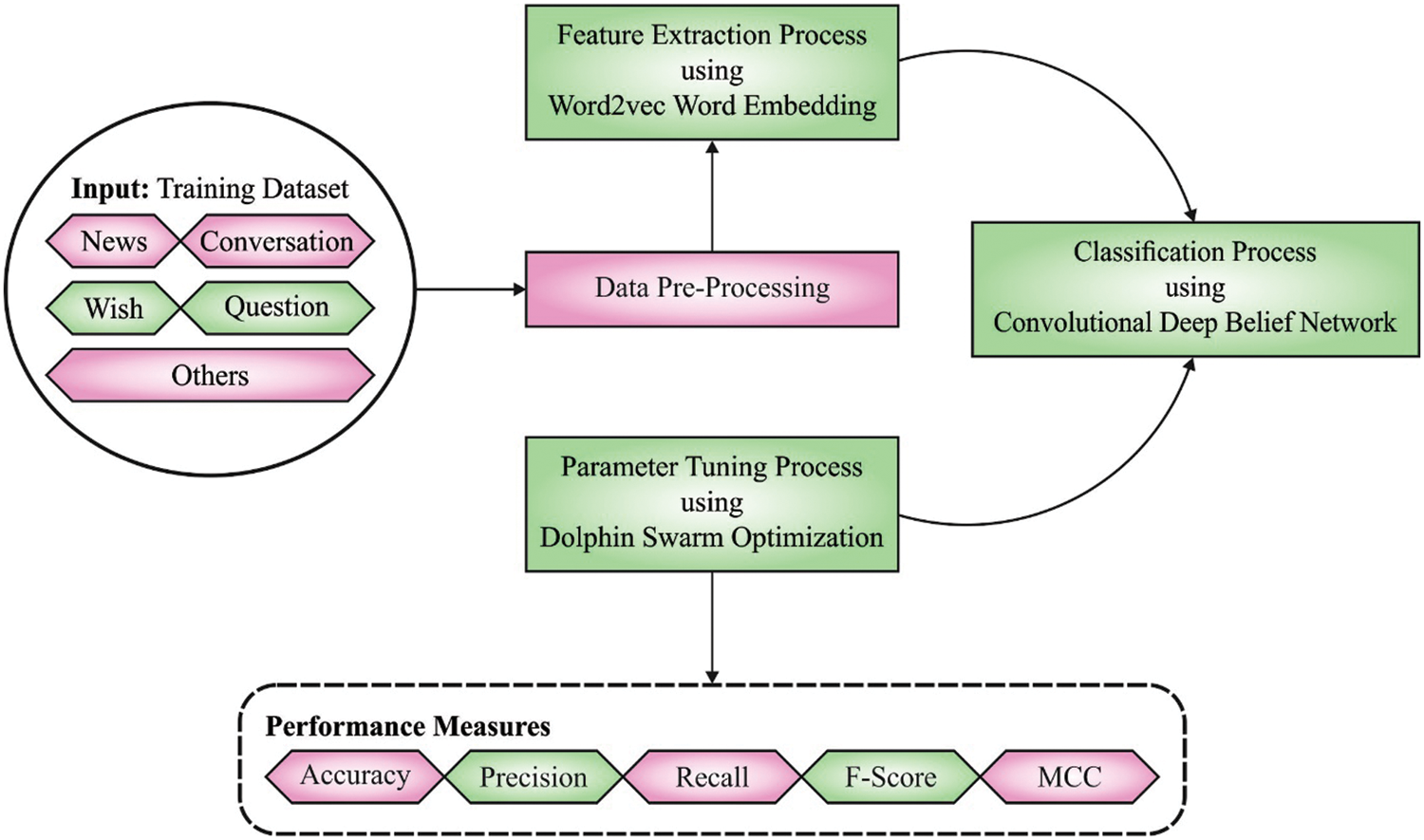
Figure 1: Overall process of DSOCDBN-STC approach
The presented DSOCDBN-STC model encompasses pre-processing and word2vec word embedding at the preliminary stage. Raw datasets frequently needed to be pre-processed. Text preprocessing is a significant phase in text mining [22]. The pre-processing steps are given in the following:
1. Data Cleansing: As the comment contains numerous syntactic features that mayn’t be beneficial for ML algorithm, the information needs to be cleaned via eliminating website link or URL (www or http). Also, comments could have repetitive letters once the user needs to highlight specific words, and the letter should be eliminated. Also, Diacritics, Emoticons, and special characters are eliminated.
2. Tokenization: they break sentences into meaningful tokens, symbols, words, and phrases by eliminating punctuation marks.
3. Stop word removal: they have shared words which don’t add useful content to a file. For instance, (من ,إلى ,على ,أما ,و (in English ‘from, to, on, as for, and’.
4. Normalization: The letter has multiple forms are normalized into single form. Alef in Arabic comprises various formats (أ ,إ ,آ ,ا ,(normalized to (ا, (and Taa Almarbotah (ه ,ة (was normalized to. (ه) are some of the examples.
5. POS tagging: This stage was implemented to recognize diverse POS in the text. For word embedding, we utilize Word2vec, a common prediction-based approach viz. effective interms of time and space. Word2vec is a two-layer NN, whereby input was the document, and output can be a set of real-valued feature vectors–one vector for each word–of a pre-set dimension.
2.2 Short Text Classification Using CDBN Model
Next to data pre-processing, the DSOCDBN-STC model involves CDBN based classification model for Arabic short text. A DBN is a generative graphical method which consists of a stack of Restricted Boltzmann Machine (RBM), composed by single layer of visible unit (input dataset) and multiple layers of hidden unit. The relation between the topmost 2 layers of the DBN is undirected whereas the remaining connection is directed but there is no correlation for the node in similar layer [23].
An RBM is a two layer undirected graphical method comprised of single layer of hidden unit “h”, and single layer of visible unit “v”, having a complete set of connections amongst them. The probabilistic semantics and the energy function for an RBM are described below:
From the expression,
RBM is trained to learn a generative mechanism in an unsupervised way. One effective learning model for RBM is contrastive divergence “CD” that is a form of contrastive optimization that approximates the gradient of log probability of the learning dataset.
Building hierarchical structure of feature is a challenge and CDBN amongst the prominent feature extractors are widely employed in the region of pattern detection.
Convolution DBN is a hierarchical generative mechanism: supports effective top-down and bottom-up probabilistic inferences. Similar to typical DBN, this framework comprises multiple layers of
Assume the hidden unit H is separated into K groups (maps), whereby every group is an
The filter weight is shared among each location in the hidden unit within a similar map. Also, there exists a shared bias
A new function for CDBN structure termed “probabilistic
The conditional and joint likelihood distribution of the CRBM is formulated by:
From the expression,
By utilizing the operator previously determined (4),
Like RBM, training CRBM can be done by utilizing CD model that is an estimate of maximal likelihood approximation. Moreover, CD allows us to evaluate an estimated gradient efficiently. Learning and Inference models depend on block Gibbs sampling model. The hidden unit “activation” is exploited by the input for training the subsequent CRBM layer.
2.3 Hyperparameter Optimization Using DSO Algorithm
At last, the DSO technique can be exploited for optimal modification of the hyperparameters related to the CDBN method. DSO comprises multiple stages namely search, initialization, call, predation, and reception, involve the predatory procedure of dolphins, and the characteristics and habits assist dolphins to achieve the goal all over the predatory procedure [25]. Based on swarm intelligence, a certain amount of dolphins is required to simulate biological characteristics and living habits specified in the real predatory method of dolphins. DSO is classified into five stages in the following
1) Initialization stage: randomly and evenly producing primary dolphins swarming,
2) Search stage: here, every dolphin implements a search of nearby region through emitting sound in M random direction. In the maximum search time Tl, sound
For the novel solution
In such cases, the individual optimal solution
next
3) Call stage: here, dolphin generates sound to inform others in the searching stage that involves a better solution was attained and the position of that best solution. The matrix of transmitting time TS whereby
if (Fitness
and
then
Or else
Speed characterizes a constant corresponding to sound attributes. A denotes a constant that shows acceleration can able to make sound travel at a high speed if lower speed, next,
4) Reception stage: here, the procedure of exchange (including call and reception stages) is preserved with the
Sound is transferred from
5) Predation stage: here, dolphin is requisite to calculate the encircling radius R2, defining a distance among optimal solution of neighboring dolphin and its location succeeding the stage of predation according to the presented dataset, and later, achieves a novel location and it is evaluated as follows:
distance
distance DKL:
Rl: characterizes the radius of search, demonstrating the maximal searching stage is evaluated in the subsequent stage:
Generally, computing the encircling radius R2 and dolphin location update is given below.
Compute
Or else
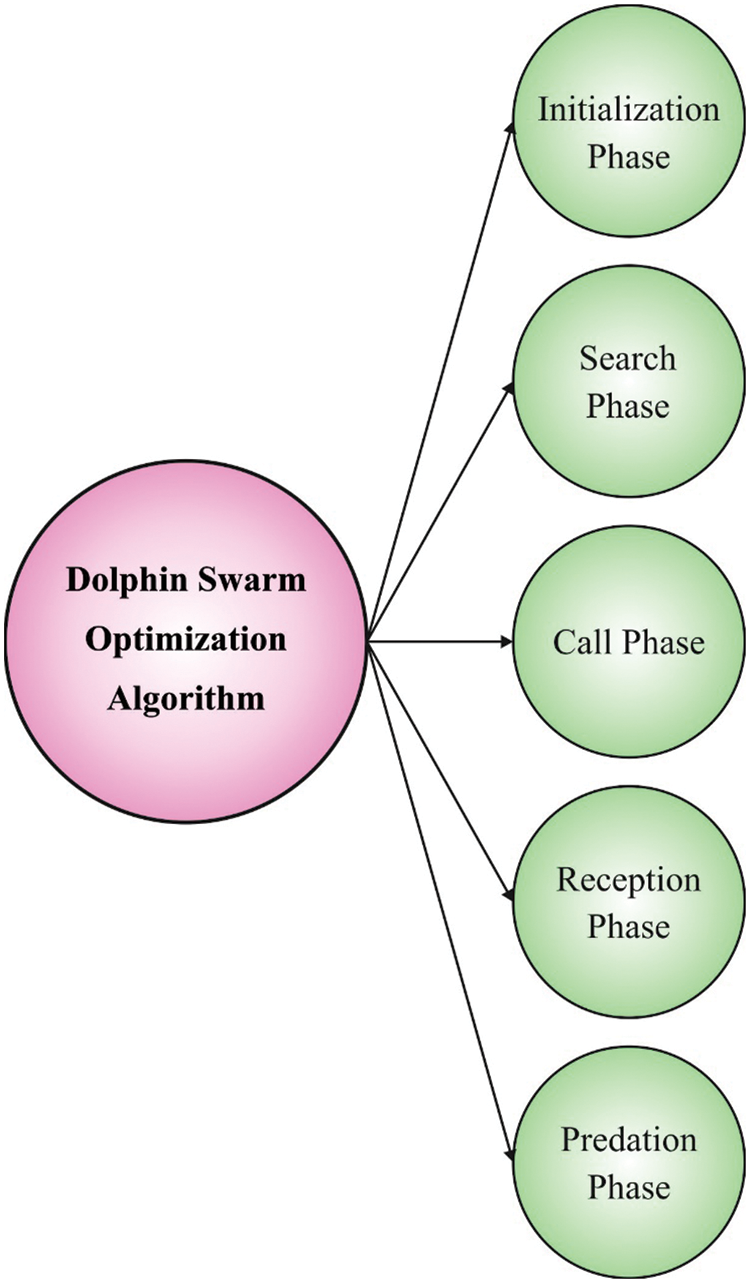
Figure 2: Steps involved in DSO
The DSO algorithm makes a derivation of fitness function for reaching improvised classifier outcome. It sets a positive numeral for indicating superior outcome of candidate solutions. In this article, the reduction of the classifier error rates can be taken as the fitness function, as presented in Eq. (28).
This section examines the classification results of the DSOCDBN-STC model using a dataset comprising 5 class labels as depicted in Table 1. The proposed model is simulated using Python 3.6.5 tool.

The proposed model is experimented on PC i5-8600k, GeForce 1050Ti 4GB, 16GB RAM, 250GB SSD, and 1TB HDD.
Fig. 3 illustrates the confusion matrices produced by the DSOCDBN-STC method on the dataset. On 80% of TR data, the DSOCDBN-STC model has recognized 1971 samples into C1, 1979 samples into C2, 1928 samples into C3, 1971 samples into C4, and 1961 samples into C5. Followed by, 20% of TS data, the DSOCDBN-STC method has recognized 487 samples into C1, 483 samples into C2, 497 samples into C3, 490 samples into C4, and 493 samples into C5. Also, on 70% of TR data, the DSOCDBN-STC technique has recognized 1728 samples into C1, 1679 samples into C2, 1729 samples into C3, 1690 samples into C4, and 1728 samples into C5. Meanwhile, on 30% of TS data, the DSOCDBN-STC algorithm has recognized 748 samples into C1, 779 samples into C2, 696 samples into C3, 727 samples into C4, and 731 samples into C5.
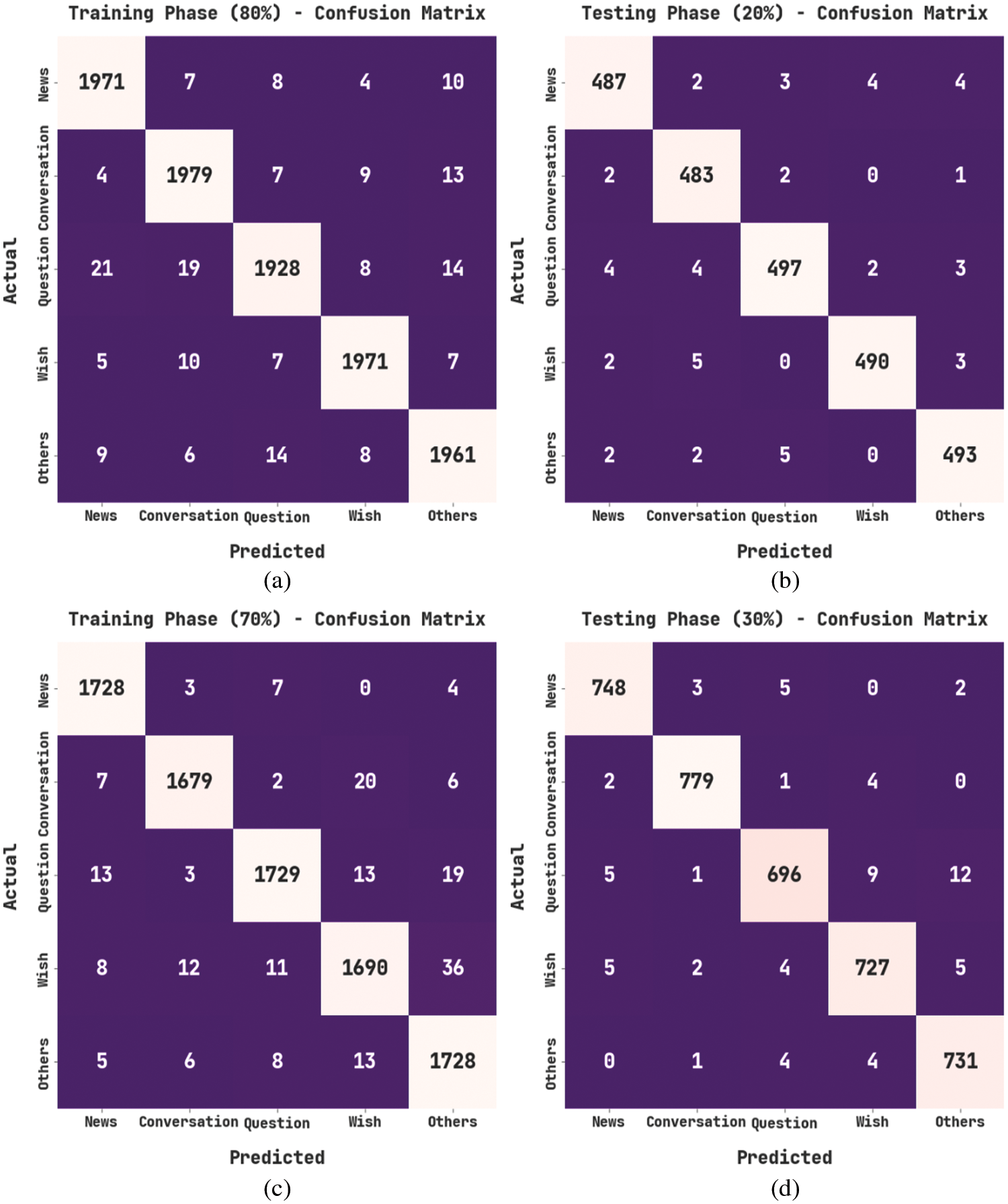
Figure 3: Confusion matrices of DSOCDBN-STC approach (a) 80% of TR data, (b) 20% of TS data, (c) 70% of TR data, and (d) 30% of TS data
Table 2 offers a brief result analysis of the DSOCDBN-STC model on 80% of TR data and 20% of TS data. With 80% of TR data, the DSOCDBN-STC model has shown average

Table 3 offers a detailed result analysis of the DSOCDBN-STC method on 70% of TR data and 30% of TS data. With 70% of TR data, the DSOCDBN-STC model has exhibited average

The training accuracy (TA) and validation accuracy (VA) acquired by the DSOCDBN-STC method on test dataset is shown in Fig. 4. The experimental outcome implicit the DSOCDBN-STC technique has attained maximal values of TA and VA. In specific, the VA is greater than TA.
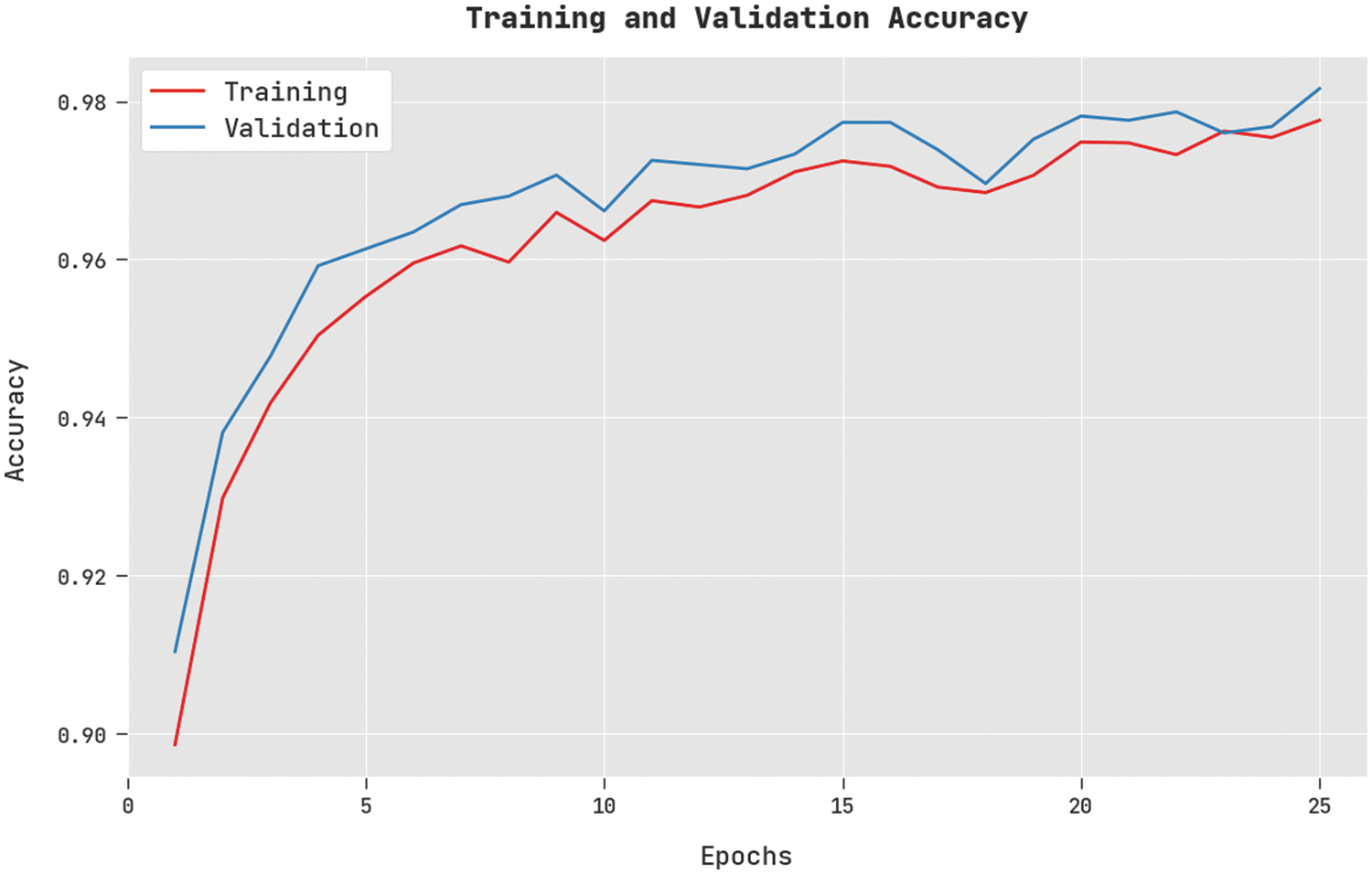
Figure 4: TA and VA analysis of DSOCDBN-STC approach
The training loss (TL) and validation loss (VL) achieved by the DSOCDBN-STC approach on test dataset are displayed in Fig. 5. The experimental outcome denoted the DSOCDBN-STC algorithm has established least values of TL and VL. Particularly, the VL is lesser than TL.
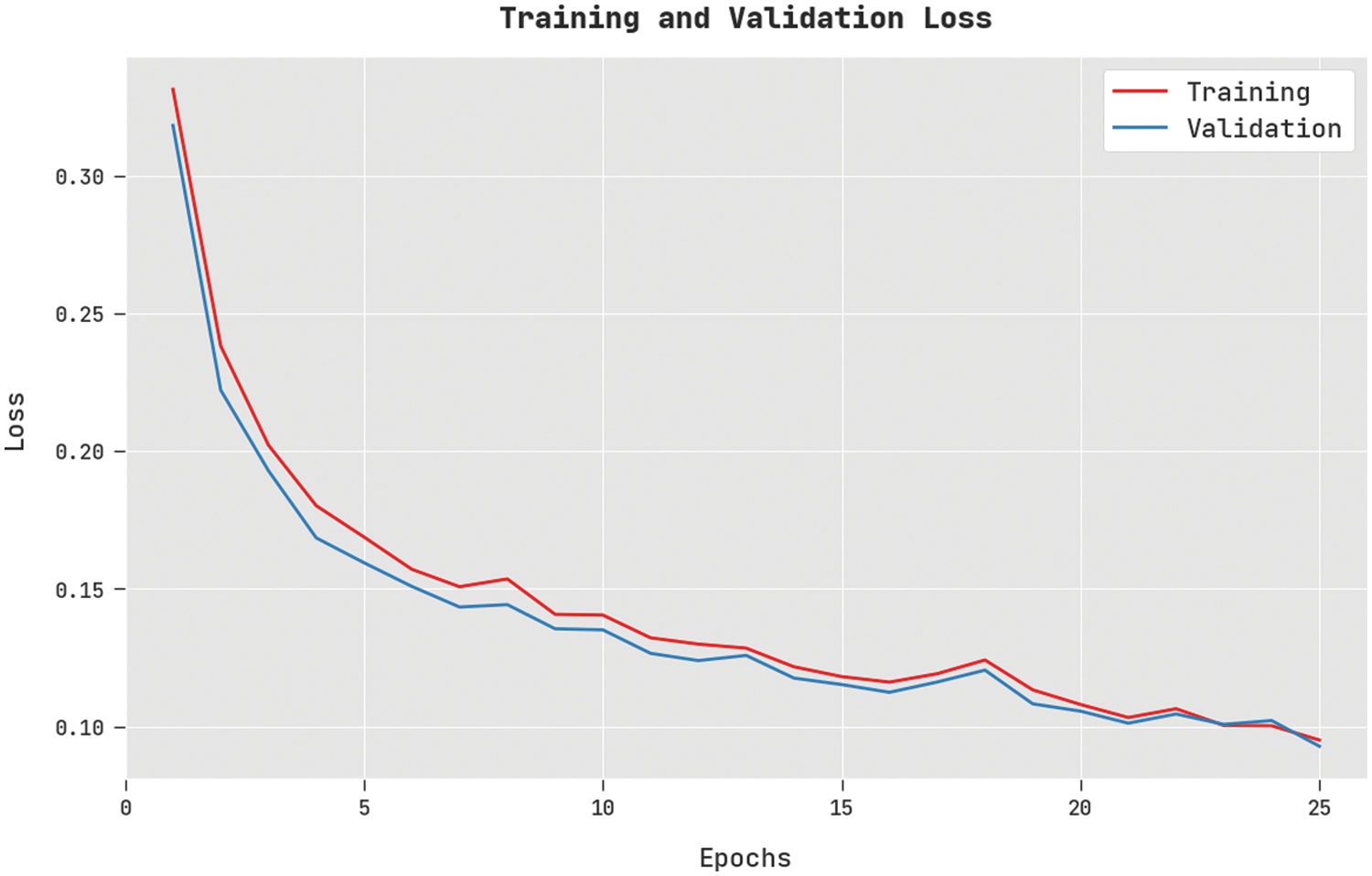
Figure 5: TL and VL analysis of DSOCDBN-STC approach
A clear precision-recall analysis of the DSOCDBN-STC method on test dataset is displayed in Fig. 6. The figure indicated that the DSOCDBN-STC technique has resulted to enhanced values of precision-recall values under all classes.

Figure 6: Precision-recall curve analysis of DSOCDBN-STC approach
A brief ROC analysis of the DSOCDBN-STC method on test dataset is shown in Fig. 7. The results denoted the DSOCDBN-STC algorithm has shown its ability in categorizing distinct classes on test dataset.

Figure 7: ROC curve analysis of DSOCDBN-STC approach
For confirming the improvements of the DSOCDBN-STC model, a brief comparison study is made in Table 4 [26].

Fig. 8 illustrates a comparative
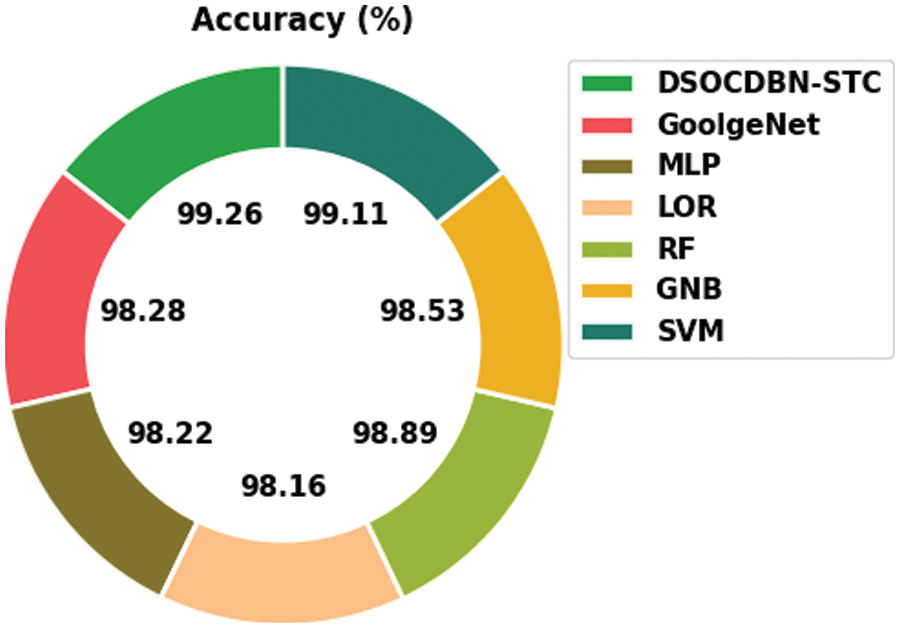
Figure 8:
Fig. 9 demonstrates a comparative

Figure 9:
Fig. 10 shows a comparative
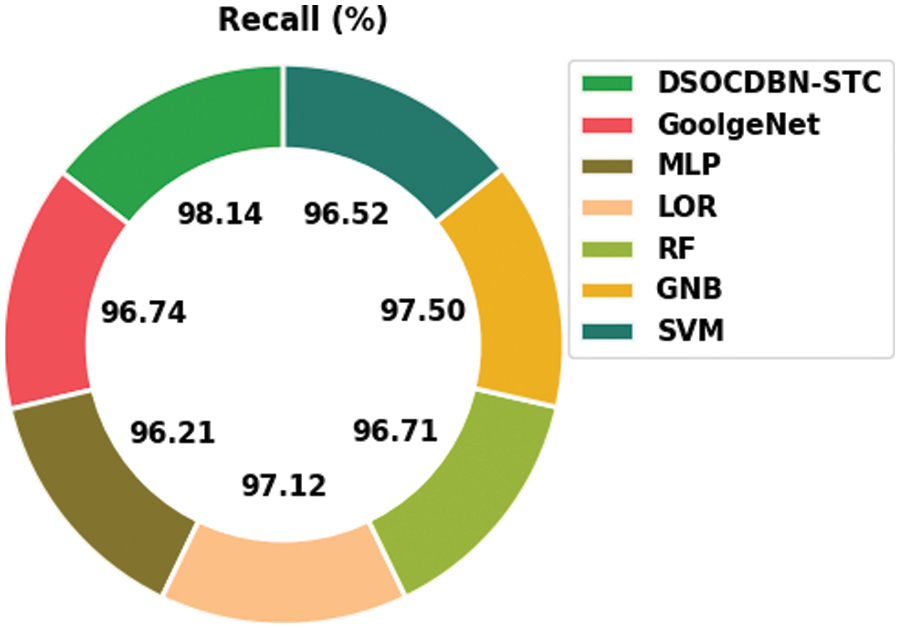
Figure 10:
Fig. 11 exemplifies a comparative
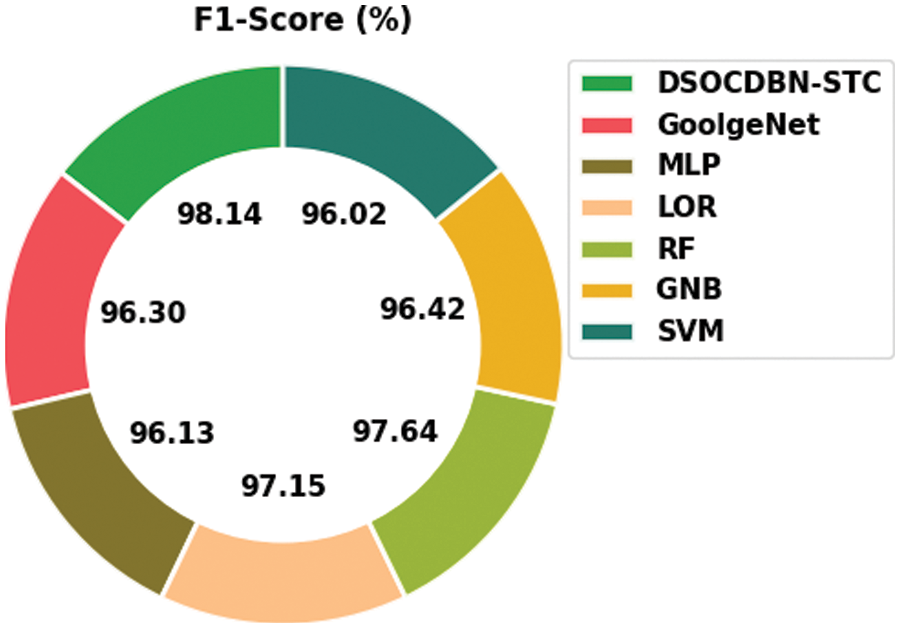
Figure 11:
Then, the RF and GNB approaches have reported slightly enhanced
In this article, a new DSOCDBN-STC model was devised for short text classification on Arabic Corpus. The presented DSOCDBN-STC model majorly aims to classify Arabic short text in social media. The presented DSOCDBN-STC model encompasses pre-processing and word2vec word embedding at the preliminary stage. Besides, the DSOCDBN-STC model involves CDBN based classification model for Arabic short text. At last, the DSO technique can be exploited for optimal modification of the hyperparameters related to the CDBN method. To demonstrate the enhanced performance of the DSOCDBN-STC model, a wide range of simulations have been performed. The simulation results confirmed the supremacy of the DSOCDBN-STC model over existing models with improved accuracy of 99.26%. As a part of future scope, the performance of the presented model can be enhanced by the feature selection models.
Funding Statement: Princess Nourah bint Abdulrahman University Researchers Supporting Project number (PNURSP2022R263), Princess Nourah bint Abdulrahman University, Riyadh, Saudi Arabia. The authors would like to thank the Deanship of Scientific Research at Umm Al-Qura University for supporting this work by Grant Code: 22UQU4340237DSR40.
Conflicts of Interest: The authors declare that they have no conflicts of interest to report regarding the present study.
References
1. A. Wahdan, S. A. Hantoobi, S. A. Salloum and K. Shaalan, “A systematic review of text classification research based on deep learning models in Arabic language,” International Journal of Electrical and Computer Engineering, vol. 10, no. 6, pp. 6629, 2020. [Google Scholar]
2. A. H. Ombabi, W. Ouarda and A. M. Alimi, “Deep learning CNN–LSTM framework for Arabic sentiment analysis using textual information shared in social networks,” Social Network Analysis and Mining, vol. 10, no. 1, pp. 53, 2020. [Google Scholar]
3. M. Alruily, “Classification of Arabic tweets: A review,” Electronics, vol. 10, no. 10, pp. 1143, 2021. [Google Scholar]
4. M. Hegazi, Y. Al-Dossari, A. Al-Yahy, A. Al-Sumari and A. Hilal, “Preprocessing arabic text on social media,” Heliyon, vol. 7, no. 2, pp. e06191, 2021. [Google Scholar]
5. F. N. Al-Wesabi, “Proposing high-smart approach for content authentication and tampering detection of Arabic text transmitted via internet,” IEICE Transactions on Information and Systems, vol. E103.D, no. 10, pp. 2104–2112, 2020. [Google Scholar]
6. S. A. Salloum, C. Mhamdi, M. Al-Emran and K. Shaalan, “Analysis and classification of arabic newspapers’ facebook pages using text mining techniques,” International Journal of Information Technology and Language Studies, vol. 1, no. 2, pp. 8–17, 2017. [Google Scholar]
7. F. N. Al-Wesabi, A. Abdelmaboud, A. A. Zain, M. M. Almazah and A. Zahary, “Tampering detection approach of Arabic-text based on contents interrelationship,” Intelligent Automation & Soft Computing, vol. 27, no. 2, pp. 483–498, 2021. [Google Scholar]
8. A. S. Almasoud, S. B. Haj Hassine, F. N. Al-Wesabi, M. K. Nour, A. M. Hilal et al., “Automated multi-document biomedical text summarization using deep learning model,” Computers, Materials & Continua, vol. 71, no. 3, pp. 5799–5815, 2022. [Google Scholar]
9. F. N. Al-Wesabi, “A hybrid intelligent approach for content authentication and tampering detection of Arabic text transmitted via internet,” Computers, Materials & Continua, vol. 66, no. 1, pp. 195–211, 2021. [Google Scholar]
10. A. Oussous, F. -Z. Benjelloun, A. A. Lahcen and S. Belfkih, “ASA: A framework for Arabic sentiment analysis,” Journal of Information Science, vol. 46, no. 4, pp. 544–559, 2020. [Google Scholar]
11. F. N. Al-Wesabi, “A smart English text zero-watermarking approach based on third-level order and word mechanism of markov model,” Computers, Materials & Continua, vol. 65, no. 2, pp. 1137–1156, 2020. [Google Scholar]
12. B. Y. AlHarbi, M. S. AlHarbi, N. J. AlZahrani, M. M. Alsheail, J. F. Alshobaili et al., “Automatic cyber bullying detection in Arabic social media,” International Journal of Engineering Research & Technology, vol. 12, no. 12, pp. 2330–2335, 2019. [Google Scholar]
13. F. N. Al-Wesabi, “Entropy-based watermarking approach for sensitive tamper detection of Arabic text,” Computers, Materials & Continua, vol. 67, no. 3, pp. 3635–3648, 2021. [Google Scholar]
14. A. S. Alammary, “BERT models for arabic text classification: A systematic review,” Applied Sciences, vol. 12, no. 11, pp. 5720, 2022. [Google Scholar]
15. F. Alhaj, A. Al-Haj, A. Sharieh and R. Jabri, “Improving Arabic cognitive distortion classification in twitter using BERTopic,” International Journal of Advanced Computer Science and Applications, vol. 13, no. 1, pp. 854–860, 2022. [Google Scholar]
16. S. L. M. Sainte and N. Alalyani, “Firefly algorithm based feature selection for arabic text classification,” Journal of King Saud University-Computer and Information Sciences, vol. 32, no. 3, pp. 320–328, 2020. [Google Scholar]
17. A. Hawalah, “Semantic ontology-based approach to enhance Arabic text classification,” Big Data and Cognitive Computing, vol. 3, no. 4, pp. 53, 2019. [Google Scholar]
18. M. F. Ibrahim, M. A. Alhakeem and N. A. Fadhil, “Evaluation of naïve Bayes classification in Arabic short text classification,” Al-Mustansiriyah Journal of Science, vol. 32, no. 4, pp. 42–50, 2021. [Google Scholar]
19. M. Beseiso and H. Elmousalami, “Subword attentive model for Arabic sentiment analysis: A deep learning approach,” ACM Transactions on Asian and Low-Resource Language Information Processing, vol. 19, no. 2, pp. 1–17, 2020. [Google Scholar]
20. H. Najadat, M. A. Alzubaidi and I. Qarqaz, “Detecting Arabic spam reviews in social networks based on classification algorithms,” ACM Transactions on Asian and Low-Resource Language Information Processing, vol. 21, no. 1, pp. 1–13, 2022. [Google Scholar]
21. Y. Albalawi, J. Buckley and N. Nikolov, “Investigating the impact of pre-processing techniques and pre-trained word embeddings in detecting Arabic health information on social media,” Journal of Big Data, vol. 8, no. 1, pp. 1–29, 2021. [Google Scholar]
22. F. R. Alharbi and M. B. Khan, “Identifying comparative opinions in Arabic text in social media using machine learning techniques,” SN Applied Sciences, vol. 1, no. 3, pp. 213, 2019. [Google Scholar]
23. V. T. Tran, F. AlThobiani and A. Ball, “An approach to fault diagnosis of reciprocating compressor valves using teager–Kaiser energy operator and deep belief networks,” Expert Systems with Applications, vol. 41, no. 9, pp. 4113–4122, 2014. [Google Scholar]
24. X. Zhao, M. Jia and Z. Liu, “Semisupervised graph convolution deep belief network for fault diagnosis of electormechanical system with limited labeled data,” IEEE Transactions on Industrial Informatics, vol. 17, no. 8, pp. 5450–5460, 2021. [Google Scholar]
25. A. K. Srivastava, D. Pandey and A. Agarwal, “Extractive multi-document text summarization using dolphin swarm optimization approach,” Multimedia Tools and Applications, vol. 80, no. 7, pp. 11273–11290, 2021. [Google Scholar]
26. S. M. Alzanin, A. M. Azmi and H. A. Aboalsamh, “Short text classification for Arabic social media tweets,” Journal of King Saud University-Computer and Information Sciences, pp. S1319157822001045, 2022, https://doi.org/10.1016/j.jksuci.2022.03.020. [Google Scholar]
Cite This Article
 Copyright © 2023 The Author(s). Published by Tech Science Press.
Copyright © 2023 The Author(s). Published by Tech Science Press.This work is licensed under a Creative Commons Attribution 4.0 International License , which permits unrestricted use, distribution, and reproduction in any medium, provided the original work is properly cited.


 Submit a Paper
Submit a Paper Propose a Special lssue
Propose a Special lssue View Full Text
View Full Text Download PDF
Download PDF Downloads
Downloads
 Citation Tools
Citation Tools